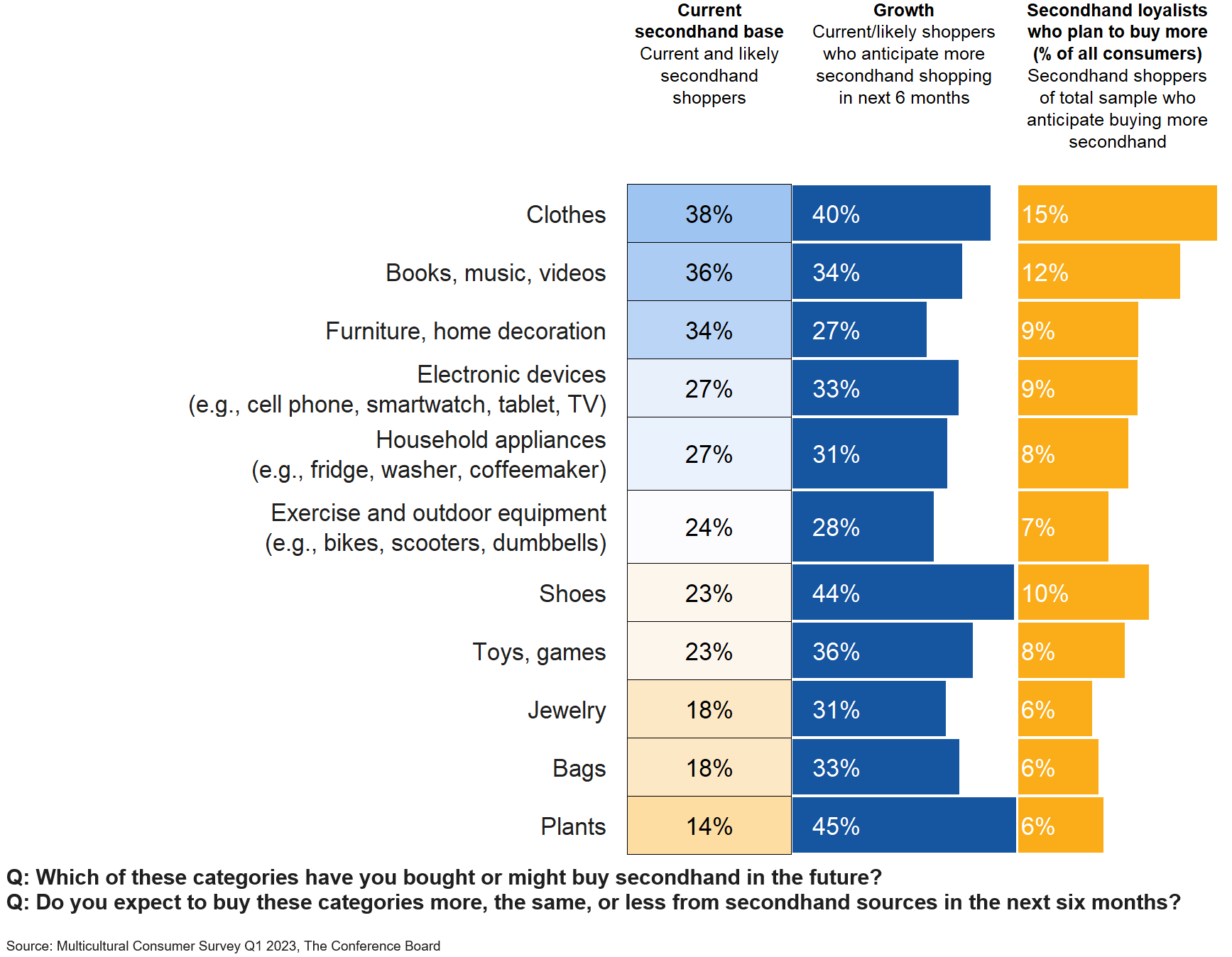According to our Q1 2023 Multicultural Consumer Survey of 2,000 US respondents, people under 35 make up the majority of secondhand shoppers. Lower-income shoppers are a key customer segment; their secondhand purchases focus on essential categories such as clothes, furniture, books, and appliances. But higher-income shoppers have joined them. They have become leading shoppers in discretionary categories such as exercise equipment, jewelry, bags, and plants. With younger and higher-income consumers most committed to buying used items, secondhand shopping has lost its stigma.
Insights for What’s Ahead
The pandemic’s supply chain issues, subsequent inflation, and online selling platforms have boosted the secondhand market—and this may continue. Buying used items was on the rise before Covid-19 due to lower costs and, increasingly, sustainability benefits and the fun of discovering unique items. The pandemic, subsequent supply chain issues, and later persistent inflation have boosted both supply and demand for secondhand items. There is more inventory from people cleaning out their homes and seeking extra income by selling their used items. Secondhand demand initially rose during the pandemic due to supply chain shortages, including shortages for cars, bikes, and home appliances. The elevated inflation over the past two years has furthered the category’s appeal—with no end in sight. Plus, company-operated digital resale platforms (e.g., ThredUp, The RealReal) and peer-to-peer platforms (e.g., eBay, Poshmark, OfferUp, Facebook Marketplace) have facilitated the increase in secondhand buying.
For secondhand retail, the categories expected to grow the most with current shoppers are plants, shoes, and clothes, ahead of toys/games, bags, and electronic devices. Apparel and books are established top secondhand categories, along with furniture, while plants are newer. Demand for houseplants has surged, driven by a greater focus on the home since the pandemic, wellness objectives, and higher prices for larger quality plants. Furniture experienced a pandemic boost, growing by 33 percent between 2019 and 2022, coinciding with IKEA’s first secondhand store in late 2020 and launch of a buyback and resell program. However, growth expectations for furniture are lower, surpassed by other products such as plants, shoes, and toys. The anticipated growth of categories such as plants and shoes, for which hygiene and wear and tear have been an obstacle in the past, suggests that other secondhand product categories could grow or emerge.
While shoes and plants are currently smaller secondhand categories, they are among the fastest growing ones

Courtesy of RAB






